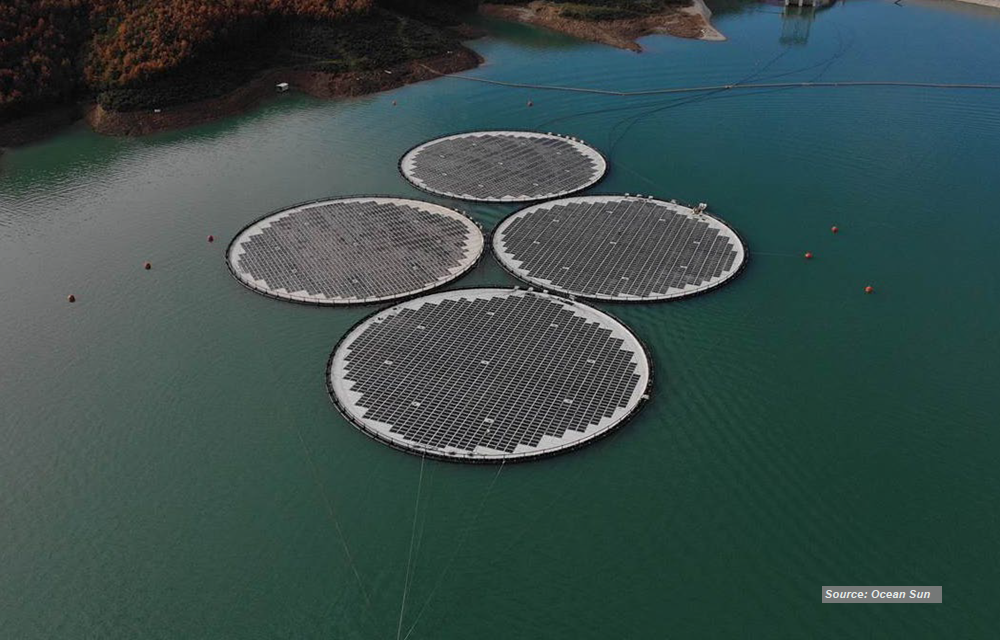- Ocean Sun’s membrane-based floating platform uses keder-attached membranes to secure solar modules, eliminating the need for tools during installation
- The system’s design allows modules to cool close to water temperature, reducing cell temperatures significantly compared to traditional floating PV systems
- Ocean Sun’s membrane-based platform minimizes the risk of panel cracks due to its robust structure and even load distribution.
Most FPV systems listed in the TaiyangNews Floating PV survey use pontoons either to mount modules directly onto them or to hold the metal mounting racks. Instead, OceanSun has developed a membrane-based floating platform. A keder is attached to the membrane, and profiles guide the modules into the keder, which holds the panels in position. The system does not require any tools to install, as the membranes come pre fabricated attached to the floating cage.
OceanSun uses single-ring and double-ring membranes. The single-ring membranes are comparable to pontoon-based floaters in terms of their ability to handle wind loads and waves, while double-ring membranes are required for rougher conditions in which pontoon-based systems cannot work, according to Ocean Sun’s chief operating officer, Ivar Blekastad,. One of the key benefits of Ocean Sun’s membrane based floating platform technology is its ability to reduce cell temperature. Since there is no air between the water, membrane, and module, the cells are cooled close to water temperature. The cell temperature will be a few degrees above the water temperature – about 5 to 10° higher depending on conditions, according to Blekastad. This is significantly lower than the cell temperature of a similar ground-mounted system or any other floating PV system, he further emphasizes. However, it is important to note that the modules are flat with no inclination. The cooling effect more or less compensates for the losses due to the lack of inclination, but the losses are beyond the level of compensation in the regions above 45° North or South (See Key Characteristics & Components Of FPV).
Despite the constant water turbulence, OceanSun says that the risk of cracks in the solar panels is low. Glass-glass panels, which are recommended by Ocean Sun, have a 2 mm glass layer on both sides, which places the cells in a neutral zone, according to Blekastad. The panels rest on the membrane with the water beneath, and the evenly distributed load on the panels is sufficient to maintain the structural integrity of the cells. Ocean Sun conducted a full scale test on a system that was in operation for 3years in the Philippines by taking off 150 panels and checking them for microcracks. The test found only 1microcrack among the 150 panels. “But it is not clear if the crack was already there before the panels were installed,” said Blekastad (see FPV On Different Water Bodies).
One of the biggest benefits of Ocean Sun’s membrane-based floating platform technology is the savings on logistics costs. The membrane required for a 700 kW system fits in a 40-foot container, and the HDPE pipes can be sourced locally. The double-ring solution that can handle harsher weather conditions costs a few cents per watt more than the single-ring solution, but it is significantly more robust and can be used in locations where other systems cannot operate.
The text is an excerpt from the TaiyangNews Floating PV 2024 Report, which can be downloaded for free here.


